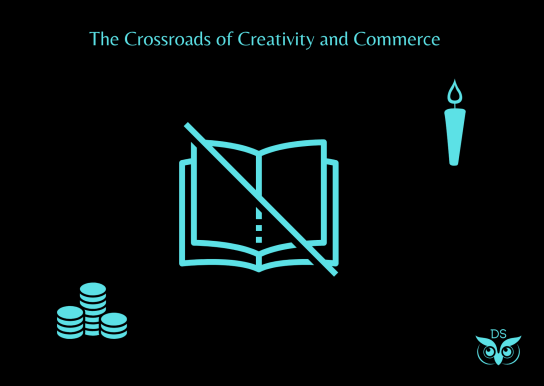As the Editor-in-Chief of Mith Books, I lead a team of writers. I’ve now had the opportunity to work with, meet and interview creatives from all fields — artists, musicians, and even dancers. Despite the choice of art form, we are all on the same journey. With each interview I conduct and with each article I edit, I discover one universal truth about ‘us’ over and over again.
Not a single person who is truly an artist is doing it for the money. Fortune and fame would be nice–but that’s not a motivating factor. So what is?

The true artists are called to the craft by a spark deep inside the soul. A need to inspire and live life beyond the ordinary. People paint artists as wishy washy and dreamy. But never before have I worked with a group of people who toil so tirelessly to master their craft and develop a unique style that is as distinctive as a fingerprint.
As the Editor-in-Chief, I find myself dealing with what is often described as the less savoury parts of the creative process — commerce. How does one even begin to put a price tag on what Sanchari Das called the Canvas of the Soul? How do we even begin to measure inspiration in monetary terms?
The purpose of any business is to generate profit. Having grown up in a family of textile merchants where I was the resident accountant, I understand this better than anyone else. And yet, profit never crossed my mind when I decided to wholeheartedly pursue writing when I turned twenty.
During my time in New York–I got my first bitter taste of dealing with traditional publishers. I was deeply disheartened by how callously they treat authors. Relegating the canvas of a writer’s soul to a slush pile. Rejecting authors without a second thought with no reason or feedback given. In the instances where I did receive feedback, it was elitist and rooted in cleverly concealed racism and sexism.

On the flip side, there are artists with such an exaggerated and grandiose perception of their work that they can’t accept feedback at all. Any feedback directed at their improvement is shunned and ignored. And then there are others, who are so focused on what sells that what they truly believe and care about gets buried under PR and branding.
That is not who I am. My soul is not for sale.
As an Editor, I feel I have formed a much deeper relationship with fellow authors than I ever did when I just read or scanned through a text and put it aside. I know each writer I’ve collaborated with an indescribable sense of intimacy. I know their strengths, their areas of improvements, the issues they care about, the topics that fire them up…and most importantly, I get a rare glimpse into the Canvas of their Soul. This is despite the fact that they all live in different countries and we have never physically met.

As an Editor, I have the job of being a taskmaster–of wielding that knife and cutting away the excess. I hone in on each flaw and weakness like an eagle looking down from up above, seeing the big perspective. I do not do this to hurt or harm anyone. Rather, I see more from that vantage point. I see that the artist is growing. And a big part of that growth is discomfort. Struggle. The difficulty that comes with understanding one’s limitations and learning to overcome them.
In her post on The Writer-Editor Relationship, Fareeha Arshad wrote:
“An author-editor relationship is a collaborative one, with an ongoing conversation on how to make the piece better and hence will have to talk and work through it together. Both the editor and the author are on the same team.
“And that makes the editor the author’s strongest critic and the biggest fan.”
By the time I am done editing an article, I have read it at least ten times, sometimes more. I am the midwife of publishing, pushing the mother in its final stages of labour. I am there for that joyous moment of creation when the baby–the artwork–finally comes into this world. A world where it will have to learn to survive and stand on its own two feet.

As a founder of a business, I am still a merchant. My job is to figure out a practical and sustainable way forward. When it comes to the crossroads of creativity and commerce, the conventional business textbooks don’t offer much. I get lost in a sea of statistics with key metrics and modes of measurement that simply don’t apply to creative industries.
I don’t believe commerce cheapens creativity. Rather, it disciplines it. It forces us to focus and use our resources wisely. I see absolutely no point in bleeding through the budget. We humans are on this earth for a finite time and we live on a planet with limited resources.
For artists who are wondering when their work will finally bear fruit, I say be patient. There is no substitute for hard work, but hard work alone is not enough. We need to have faith–that the right opportunities and people will find their way to us when we are ready.
Don’t expect a linear path. Embrace detours, side roads and perhaps even create a path where no road existed before. And every time you find yourself facing a difficult decision remember–your work may be for sale, but your soul never is.
Dipa Sanatani is the Publisher at Mith Books and the author of The Little Light and The Merchant of Stories. In The Merchant of Stories, Dipa takes the reader on a personal journey–narrated through a series of candid journal entries–on what it takes for entrepreneurs and creatives to start their very first venture.




Leave a comment